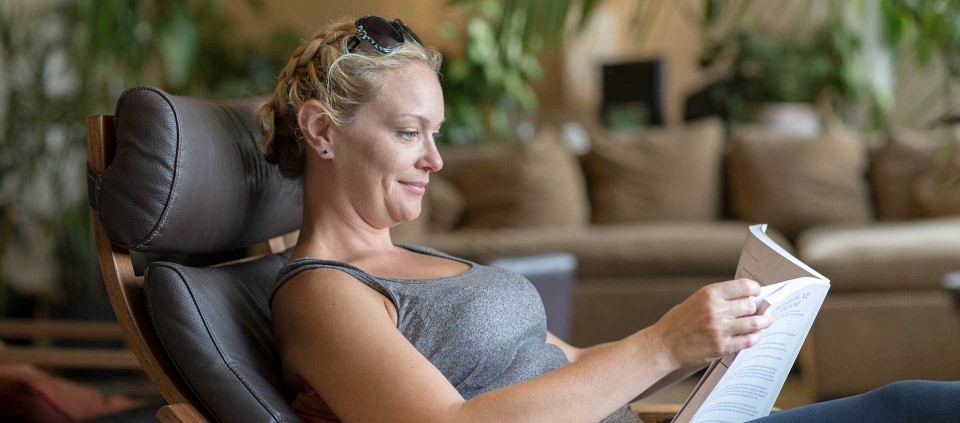Sitting Doesn’t Have to Be the New Smoking: Here’s How to Sit Better

April 17, 2020
Years ago, I spent part of my workweek going into offices and helping people adjust their workstations. The goal was developing optimal body alignment in a sitting position—right height of chair, right positioning of arms, right height of keyboard and computer monitor.
Unfortunately, the results my clients were seeking—mostly reduced back and neck pain—were elusive. It’s not that they hadn’t maintained their new sitting arrangement. The source of their chronic achiness had more to do with spending long hours of stillness locked to their chair. Were there alignment issues? Yes. But the bigger issue was lack of mobility.
Sitting: An Ancient Practice
“Sitting is the new smoking.” When I first heard this phrase, probably about 10 years ago, I thought it was an insightful, if quippy, statement. I championed the idea: “We sit too much,” I’ve said over and over to students. But the truth is that humans have been sitting forever, in a multitude of ways. There is no one right way—and we can sit well.
What we’re after is a way to sit that nourishes the body. The focus isn’t on interrupting pain patterns as much it is on proactively relating to our “sitting self” in a way that sustains and fortifies.
Say Hello to Your Core
To sit well, first invite your core into the action. While sitting is quite natural, rounding ourselves into the back of a chair, historically, is a rather recent posture choice in which we allow the chair to do for us what our core is built for.
To engage your core, attune to your sitting bones—the base of your pelvis that contacts the chair. Lean forward and back, and side to side. Land with your weight distributed evenly, with your head over your heart over your hips. Lift and widen your collarbones without thrusting your lower ribs forward. Notice when your deep core muscles—located a few inches below the navel, toward the deep belly—are working to hold you up, and the low back feels free. With practice, this will become easier to discern, and you’ll build the strength to maintain it.
Add Variety to Your Posture
There’s a reason why our bodies have hundreds of muscles, bones, and joints: We are built to move frequently. With that in mind, shift positions every 10 minutes. Alternate crossing your left leg over right and right over left. Place the sole of one foot on the opposite inner thigh, letting the knee fall out to the side, then switch. Walk one foot wide, then the other. Walk both feet wide and lean a little more forward on your sitting bones. Explore different movement possibilities.
Every 20 minutes, take a break for a brief movement practice in the chair, done with breath awareness. Here are two to try:
- Pelvic Circles: Lean into your right sitting bone, circle toward the tailbone, shift over to the left, and then move onto the front edge of your hip. Go slowly and move with the breath. Switch direction after five rotations.
- Six Movements of the Spine: With both sitting bones firmly anchored to your chair, alternate backbending and forward bending. Bend from side to send, then rotate the spine with a gentle twist to each side. Move with the breath.
Stand and Walk
Finally, try getting up every 30 minutes. Backbend gently from the chest up. Stand behind your chair and step one foot back behind you, about one leg length, sending the hips down and reaching back through the heel. Do this on both sides.
Try not to wait to move until you’re feeling stiff and achy. Be proactive, and your body will thank you!
Christopher Holmes, a Kripalu Yoga teacher and licensed massage therapist, has expertise in anatomy and physiology for yoga and bodywork, and the healing of chronic pain patterns.
Full Bio and Programs